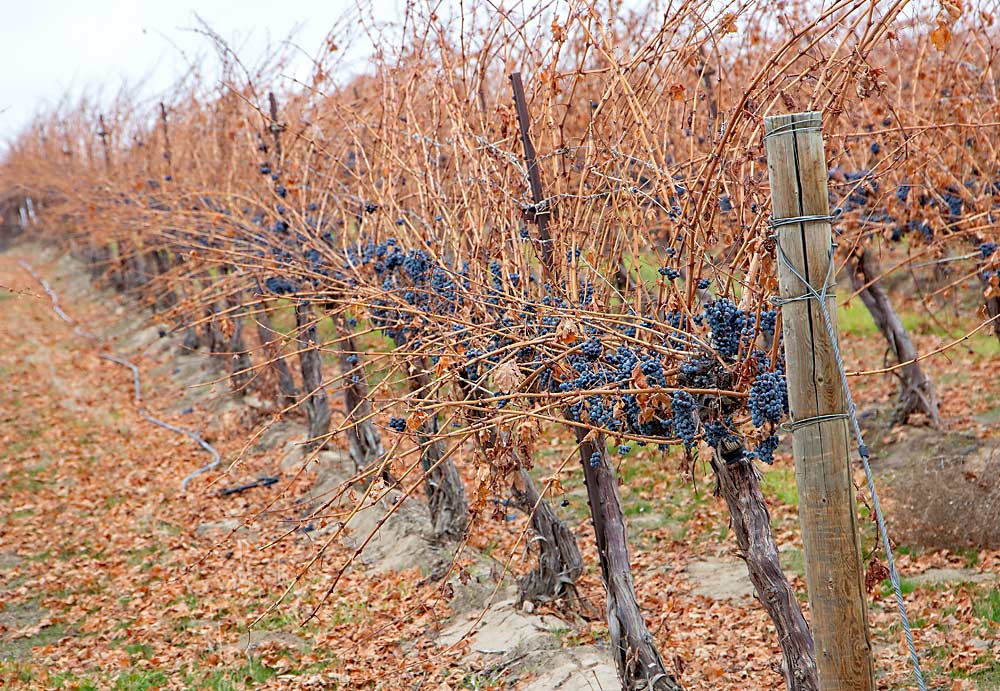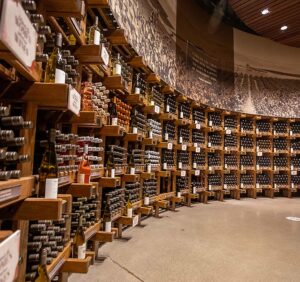
Washington’s wine grape growers suspect volume reductions announced over the summer by Ste. Michelle Wine Estates are already rippling through the industry.
State wineries crushed an estimated 152,000 tons of wine grapes, according to November’s annual estimate by the Washington Winegrowers Association, a group that represents the state’s grape producers.
If that approximation proves accurate, it would mark a 39 percent decrease from the state’s August projection of 250,000 tons.
The November crush figure is an estimate that frequently changes by March, after all wineries have reported the crush volumes that dictate their assessment payments, said Vicky Scharlau, who stepped down as executive director of Washington Winegrowers at the end of 2023.
“I think growers reacted to reality,” she said. “So, they cut.”
Dick Boushey, a Grandview grower and board member of the Washington State Wine Commission, called that number “discouraging.”
“I’m shocked at how quickly the Ste. Michelle cutback has hit,” he said.
Over the summer, the state’s largest winery, Ste. Michelle, told growers they would have to renegotiate contracts to drop roughly 40 percent of overall volume in the coming years.
The low crush would follow a relatively large harvest in 2022, which itself followed two low years due to smoke damage and excessive heat. The 2022 actual crush was 240,000 tons, about 8 percent higher than the November estimate of 223,000.
Boushey doesn’t grow for Ste. Michelle but still ended the season with grapes he couldn’t sell. With 50 customers, he usually harvests a little more than contracted, just in case.
“Normally I can sell it, but not this year,” he said.
Instead, he dropped it.
Erik McLaughlin, CEO of METIS, a Walla Walla wine and hospitality advisory business, said growers have already started removing vines. He has heard of demand for barrels, posts, wire and ground decreasing, too.
McLaughlin believes Washington can still succeed. The industry has always been bifurcated, featuring a few large companies and more than 1,000 boutique wineries. Demand for cheaper bottles has been decreasing across the country, while the luxury-priced bottles have done well but don’t have the scale.
Opportunity may lie in the middle, he said.
“Washington is better positioned than anyone else to compete in the 20- to 50-dollar range,” he said.
Rebecca De Kleine, general manager and director of winemaking at Four Feathers Wine Services, said the small volume this year means the oversupply isn’t as big as expected.
She also sees favorable circumstances for new products and packages, something consumers want, according to data that analysts have been sharing with the industry for years. For example, in 2023 Four Feathers launched its sparkling wine program after three years of development.
“There’s a lot of opportunity out there, if you’re hungry for it,” she said.
Boushey of Grandview calls it a “forced opportunity” to replace less productive or diseased blocks with different varieties to match the market.
He also suspects some Washington producers are in position to start their own new labels. The industry already has skilled professionals who have invested in their own tanks and other winemaking infrastructure, some of it built to keep up with Ste. Michelle’s historic demands.
“People are going to have to get very creative. It’s just going to take some different expertise and some risk-taking,” he said.
—by Ross Courtney







Leave A Comment